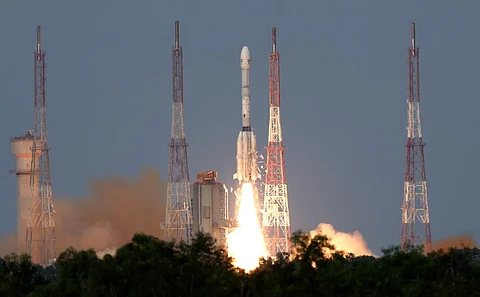

ISRO and NASA have successfully launched the NISAR satellite, designed to map Earth's minute features and monitor environmental changes.
The mission will enhance disaster preparedness and climate change understanding by observing surface dynamics, ice movement, and vegetation changes.
Equipped with dual-frequency SAR, NISAR will provide critical data for aviation, shipping, and environmental management.
India and the United States have successfully launched the NISAR mission from Indian Space Research Organisation’s (ISRO) Satish Dhawan Space Centre in Sriharikota to document and understand changes happening on Earth.
The NISAR mission, jointly developed by ISRO and The National Aeronautics and Space Administration (NASA), is an earth observation satellite, weighing 2,392 kg. Once placed into the Sun-Synchronous Polar Orbit, it will map the entire planet, including islands, sea-ice and selected oceans, every 12 days. In the sun-synchronous orbit, the satellites are in sync with the Sun.
NISAR can detect even small changes on the Earth’s surface such as ground deformation, ice sheet movement and changes in vegetation. dynamics. It can also study sea ice, monitor the shoreline, characterise storms, changes in soil moisture, mapping and monitoring of surface water resources and disaster response.
“In addition to disaster and climate change, the mission is also important for aviation and shipping sector for managing fog and visibility,” Jitendra Singh, Minister of State (Independent Charge) of the Union Ministry of Earth Sciences and Minister of State (Independent Charge) of Science and Technology, told reporters shortly after the launch.
It will observe the earth with a dual frequency Synthetic Aperture Radar (SAR). SAR involves active data collection involving an instrument that sends out a pulse of energy, which falls on Earth’s physical structures like mountains, forests, and sea ice and conditions like soil moisture. It also records the reflected energy.
The SAR has two payloads: an L- and S-band SAR. While ISRO has developed the S-band Radar system, including data handling and high-speed downlink system, along with the spacecraft and the launch system, NASA created the L-band Radar system.
NASA explains that each system’s (the L and S band) signal is sensitive to different sizes of features on Earth’s surface, and each can focus on different attributes, such as moisture content, surface roughness, and motion. For example, S-band data will allow more accurate characterisation of shorter plants, such as bushes and shrubs, while L-band data is more suited for taller vegetation like trees. Together, they can study a variety of natural surface conditions, such as the amount of soil moisture available for vegetation to thrive or land subsidence over time.
“S band is more dedicated to aviation and shipping radar. The L band has capacity to penetrate dense layers of ice, for instance,” Singh explained.
ISRO will be responsible for satellite commanding and operations while NASA will provide the orbit manoeuvre plan and RADAR operations plan.
The first 90 days of the satellites mission is the commissioning phase, where spacecraft systems will be checked and the performance of the radar instruments will be assessed. Following this, the science operations will begin.
NISAR is expected to circle Earth 14 times a day at an altitude of 464 miles to scan nearly all the planet’s land and ice surfaces twice every 12 days. The mission will send 80 terabytes of data to Earth daily and the prime mission is expected to last three years.